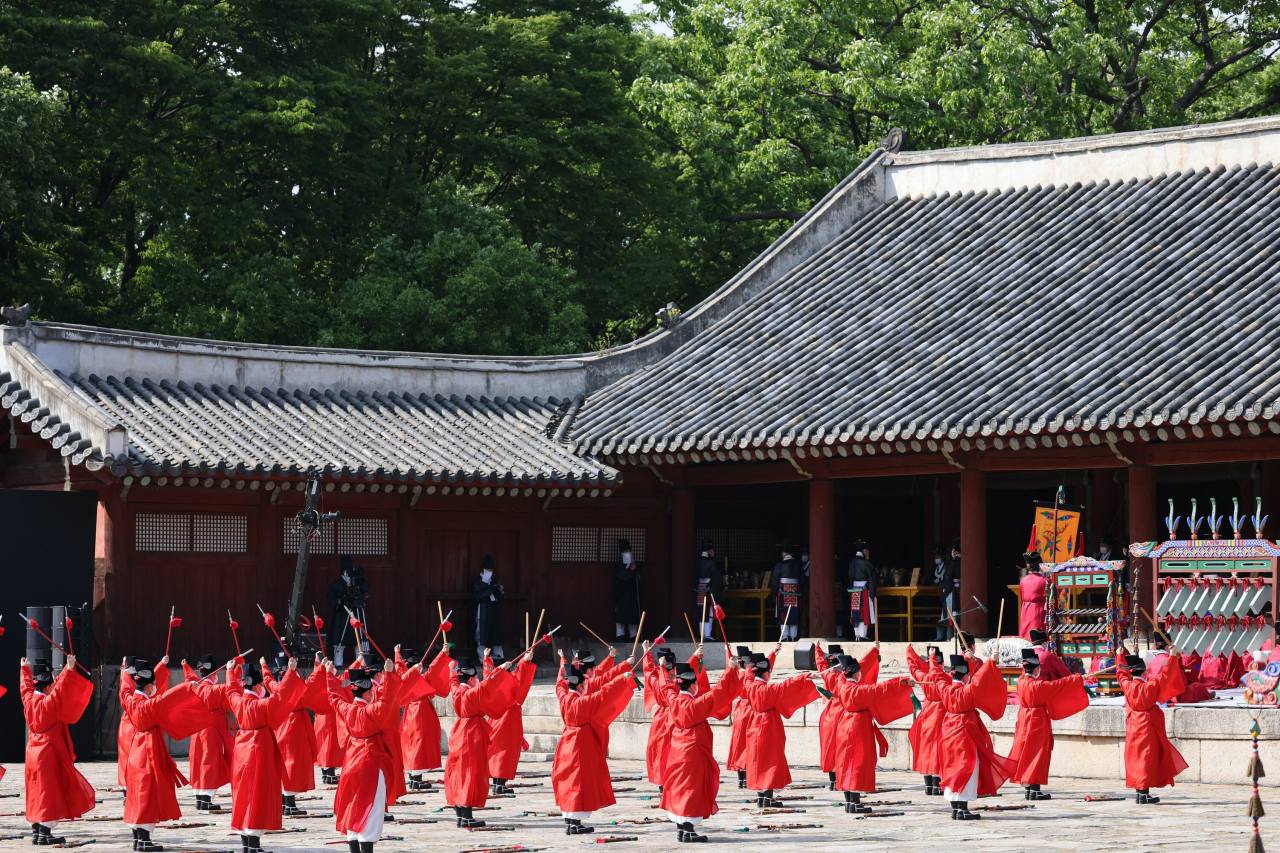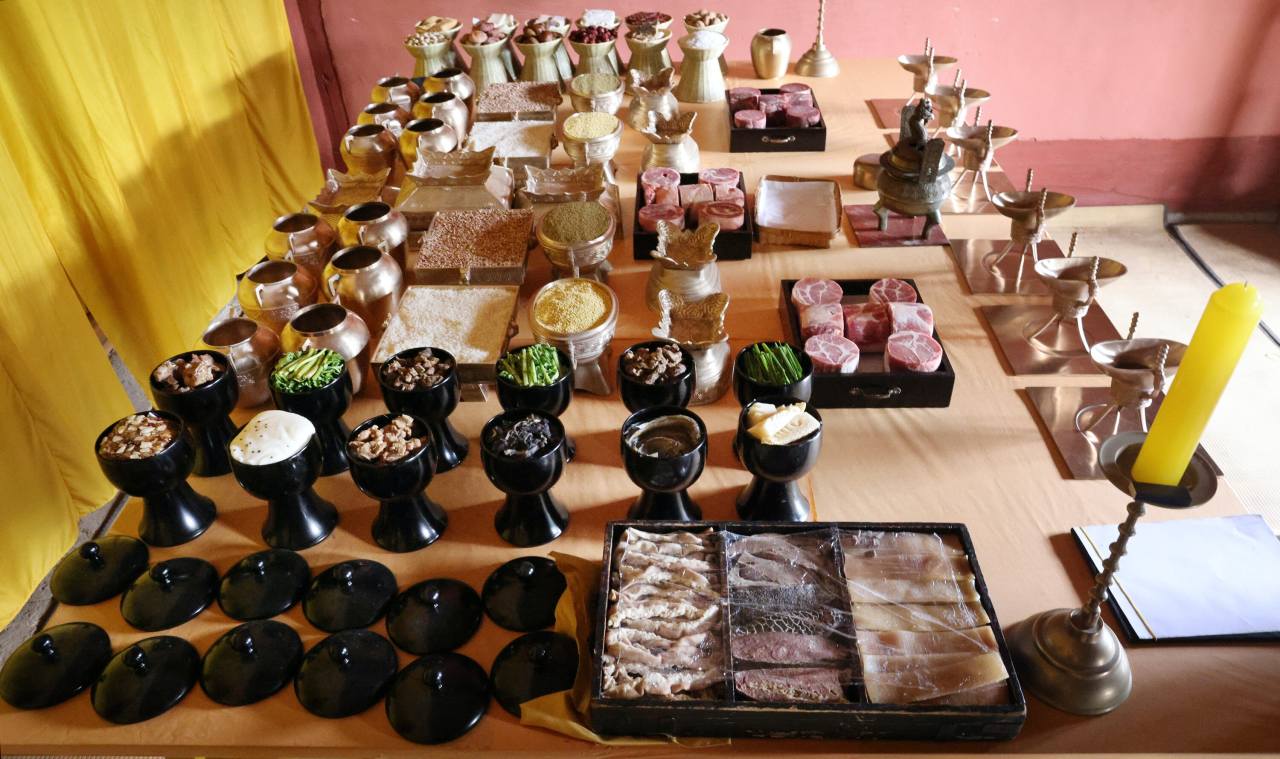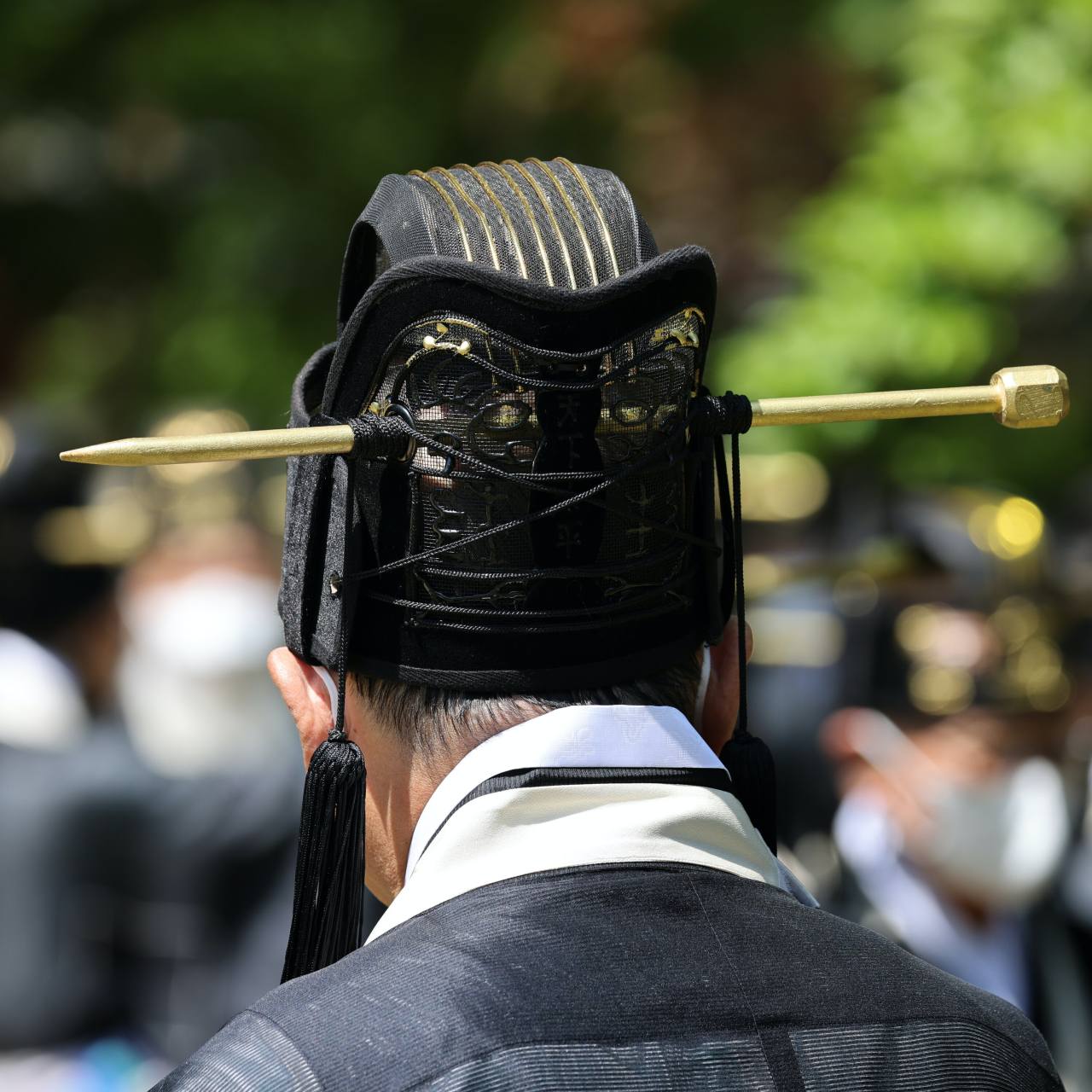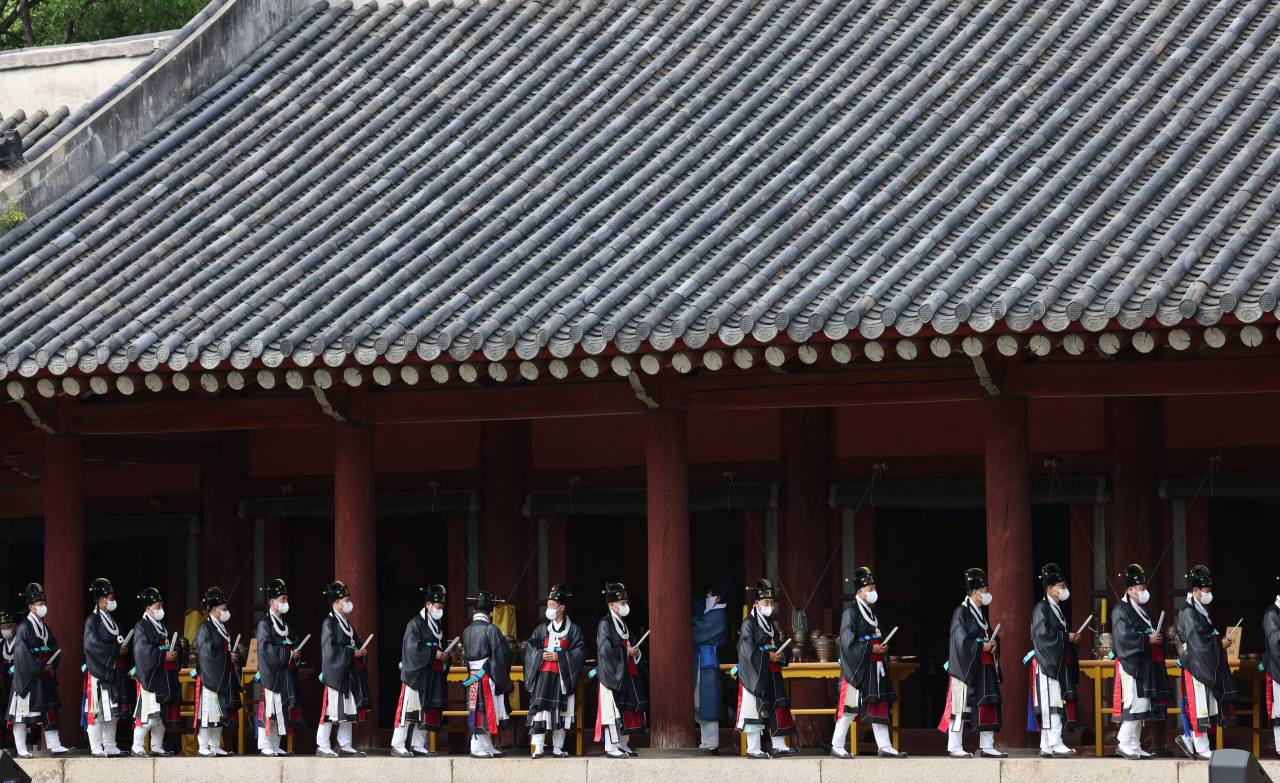 |
Dancers perform during the annual royal ancestral rite ceremony with court music held at Jongmyo Shrine, May 1, in Seoul. Photo © Hyungwon Kang |
In Korean spirituality, the soul and spirit of a person is defined as “honbaek”: “Hon” is the soul that rises to heaven, while “baek” is the spirit body that is interred underground.
From the earliest times in Korean civilization, Koreans looked to the heavens for spiritual strength.
Chamseongdan, one of the oldest altars for worshiping heaven, dates back to the Gojoseon (Ancient Joseon) period, and is still used atop Manisan in Ganghwa island.
The indigenous belief of worshiping heaven, the land and people was based on the Cheonjiin philosophy. Cheon, the heaven which is round, ji, the land which has four corners, and in, the people, all are inextricably connected.
 |
Some 45 dishes of cooked and raw food are served on elevated dishes with drinks at the annual royal ancestral rite with court music at Jongmyo Shrine in Seoul. Photo © Hyungwon Kang |
Additional schools of thought came out of the Cheonjiin philosophy that led to social changes, such as the Donghak Peasant Movement of 1894 in which the people demanded that even as we are in awe with the heavenly god, each person should also be treated with reverence and humility since we all connected.
Korean kings through Goryeo had altars dedicated to regular rituals to pray to heaven. That changed when neo-Confucianism, the official religion of the Joseon Kingdom (1392-1910), became the standard for governing ancestor worship among ordinary citizens.
During the Joseon period, ancestor worship became institutionalized with the construction of a royal shrine for the ancestor called Jongmyo, and a set of royal altars called Sajikdan -- a place where sacrifices were made to the gods of land and grain -- near a royal palace in Seoul.
Until the early 20th century, Korean kings often made ceremonial sacrifices at the Sajikdan altar several times a year, praying to the gods of land and grain to avert famine or drought.
Typically, when an ancestor passes away, the hon stays with the family for four generations. This is roughly about 120 years, covering 30 years per generation. On holidays and on memorial anniversaries, families offer food and drinks to the honbaek of the ancestors, up to the previous four generations.
Visiting graves to please the ancestor’s baek spirit buried underground on special occasions is also a common practice.
 |
A hairpin called “gae,” used secure a male officiant‘s headgear called “yangguan,” is seen at an annual royal ancestral rite with court music at Jongmyo Shrine in Seoul. Photo © Hyungwon Kang |
The royal family of Joseon was not too different, except all of the royal family’s hon souls were honored at the Jongmyo Shrine.
Jongmyo Shrine was dedicated to holding ancestor worship rituals led by the incumbent king to please honbaek of the deceased kings and queens of the Joseon Dynasty.
On May 1, some 140 officiants wearing headgear called yangguan, wearing hairpins called gae, conducted a ritual led by Yi Won, the last heir to the Korea Empire, offering drinks and food to the honbaek of all of the Joseon kings and queens.
Incense was burned to summon hon, the souls from heaven, and drinks were poured into a hole in the ground to welcome baek, the spirit bodies of the deceased from the underworld.
During an elaborate annual royal ancestral ritual at the Jongmyo Shrine, court music that was more than 550 years old and was composed by King Sejong the Great (1397 - 1450) was performed.
Some 45 dishes of cooked and raw food are served on elevated dishes along with drinks. “The offering of uncooked meat and food are a reflection of an ancient tradition of rituals that go back to prehistoric times, when food was consumed uncooked,” according to the Korea Cultural Heritage Administration.
 |
Some 140 officiants line up after conducting the ancestral rite, offering drinks and food to the souls and spirits of Joseon kings and queens at the annual royal ancestral rite held May 1 at Jongmyo Shrine in Seoul. Photo © Hyungwon Kang |
The following prayer was offered to the spirits of the ancestors:
“On this beautiful occasion, please experience a number of ceremonial dishes which have been prepared with a longing heart while adhering to proper guidance.”
Reflecting the practice of ancestor worship, a number of visual clues were observed during the annual Jongmyo rite which are evident in Hanja writing.
For example, a Hanja character which means a man or husband, “bu,” has an extra slash over a character which means a big man. A hair stick called “gae,” which is worn to secure a male officiant‘s headgear called “yangguan,” looks like the Hanja character ”bu.“
A Hanja character in the shape of a wooden tray with three compartments for meals placed on the table for the deceased, is part of the word ”jo“ that means a cutting board for food for ancestors.
A Hanja character, ”mu,“ meaning dance has a logogram showing a tilted dancer with equipment.
The annual royal ancestral rite at the Jongmyo Shrine and its music are listed as part of UNESCO’s Intangible Cultural Heritage of Humanity.
Koreans have been called the “People of the East with impeccable manners” since the time of Confucius. “Koreans worship gods and chase ideals. The reason Korea still maintains the 3,000-year-old Gojoseon rituals is because it suits Korean people’s psyche which is Confucianism, the Gojoseon philosophy that Confucius taught,” said Yi Ki-hoon, the author of “Dongyi Korean History.”
---
Korean American photojournalist and columnist Hyungwon Kang is currently documenting Korean history and culture in images and words for future generations. -- Ed.By Korea Herald (
khnews@heraldcorp.com)











![[Today’s K-pop] Blackpink’s Jennie, Lisa invited to Coachella as solo acts](http://res.heraldm.com/phpwas/restmb_idxmake.php?idx=644&simg=/content/image/2024/11/21/20241121050099_0.jpg)